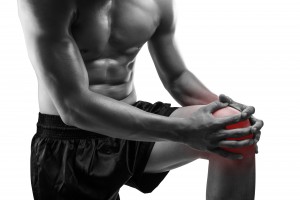Lean Eating – 8 New Rules to Get Lean and Get Healthy
Lean eating does not mean complicated eating…it just means eating smart, and it will make fat loss second nature. And don’t worry, lean eating can still be very delicious. In fact, you’ll find many of your new, lean meals to be better in flavor and more satisfying than your old, fattening eats. 
Lean Eating Rule #1. Eat the RIGHT Type of Carbs
There is a hierarchy of carbs a lean diet, which rank from healthy (good) to empty (which will only fatten you up.) The success of your eating plan rests squarely on which of these carbs you regularly include in your diet.
- Green Vegetables
- Non-Green Vegetables
- Fruit
- Whole Grains and Starches
- Refined Grains
- Foods with Added Sugar
The top 3 ranked carbs should comprise 90 percent of the carbs in your diet…in order to get that lean physique that you want. Immediately cut out the bottom 2 (refined grains and foods with added sugar), and on occasion include a limited amount of Whole Grains and Starches.
Lean Eating Rule #2. Track What You Eat
The only way to improve upon your diet is to actually know what you’re currently eating. Keep a food journal, or use an app (like VIVO), and input all of the calories that you consume over the course of a week. This will give you a broad look at where your low quality calories are coming from (high sugar, empty calories). Your first step will be to eliminate these fattening calories and to start replacing empty calories with nutrient-filled whole foods.
Lean Eating Rule #3. Never Restrict Calories to the Extreme
There’s a certain allure in the idea of temporarily restricting calories to the extreme. The idea that one can drop a down a size or two in just as many weeks is quite tempting. I hate to be the one to burst your overambitious bubble, but extreme calorie restriction NEVER WORKS. It’s terrible for your body, and it is not something that is sustainable (namely because you’d starve to death) so the pendulum inevitably swings in the other direction, resulting in binges.
The key to being lean for life is to eat in a way that you can sustain forever. Eat whole foods. Eat a moderate amount of the RIGHT calories. Every day, ongoing, forever.
Lean Eating Rule #4. Eat Veggies First
This may go against all of your instincts, but hear this one out. When you sit down to a meal first eat all of the veggies and salad, before moving on to the main dish. This simple strategy helps to fill you up with lower calorie foods first, before moving on to the higher calorie items.
By making this a habit you’ll naturally and effortlessly consume fewer calories at each meal, which will have a big impact on weight loss.
Lean Eating Rule #5. Include Protein at Every Meal
Each of your meals should be built around a healthy serving of protein. This protein could be meat (chicken breast, fish fillet, roasted turkey, braised beef etc.) eggs, or protein powder (such as Beverly International UMP.)
Having protein as the focal point of your meal is important for two reasons: 1) You’re fueling up in a way that builds muscles rather than stores fat, and 2) By default, you’re avoiding high calorie main dishes, which are what really cause most weight gain.
Lean Eating Rule #6. Ban Liquid Calories
Liquid calories have no place in a lean eating plan. No place at all. Anytime that you are drinking calories, it’s safe to assume that you’re adding inches to your waistline. Put down the beer, just say no to the blended coffee drink, and forget about fully loaded soda pop. Filtered water and unsweetened tea are the best alternatives to calorie-laden beverages.
Lean Eating Rule #7. Avoid Prepackaged Foods
Prepackaged foods and snacks have no place in a lean eating plan. These processed foods contain numerous fattening ingredients such as refined sugar, sodium, grains, fillers and other artificial ingredients. If you are currently eating packaged foods on a daily basis, cutting these items out will quickly translate into pounds lost.
Lean Eating Rule #8. Swim Upstream
As a society we are overweight, riddled with obesity related ailments, uncomfortable in our own skin, and craving weight loss. So…it’s safe to say that whatever you see the masses around you do, when it comes to food and exercise, you should aim to do the opposite.
See a line wrapped around that fast food joint’s drive thru? Do not enter. Instead, eat a simple meal made with vegetables and lean protein.
See all 5 people ahead of you in line at the coffee shop order a sweet drink? Do not follow suit. Instead, order an unsweetened drink.
See the movie theatre parking lot packed to the brim, and the gym parking lot empty? Skip the movie and hit the gym.
Swim upstream, be different than the masses by living in a desirable, healthy, lean body.
There is no magic machine, pill or diet that will accelerate weight loss. Call or email me today to get started on a nutrition plan that really works, or to review your current plan. Or, schedule an appointment to get back on track.

